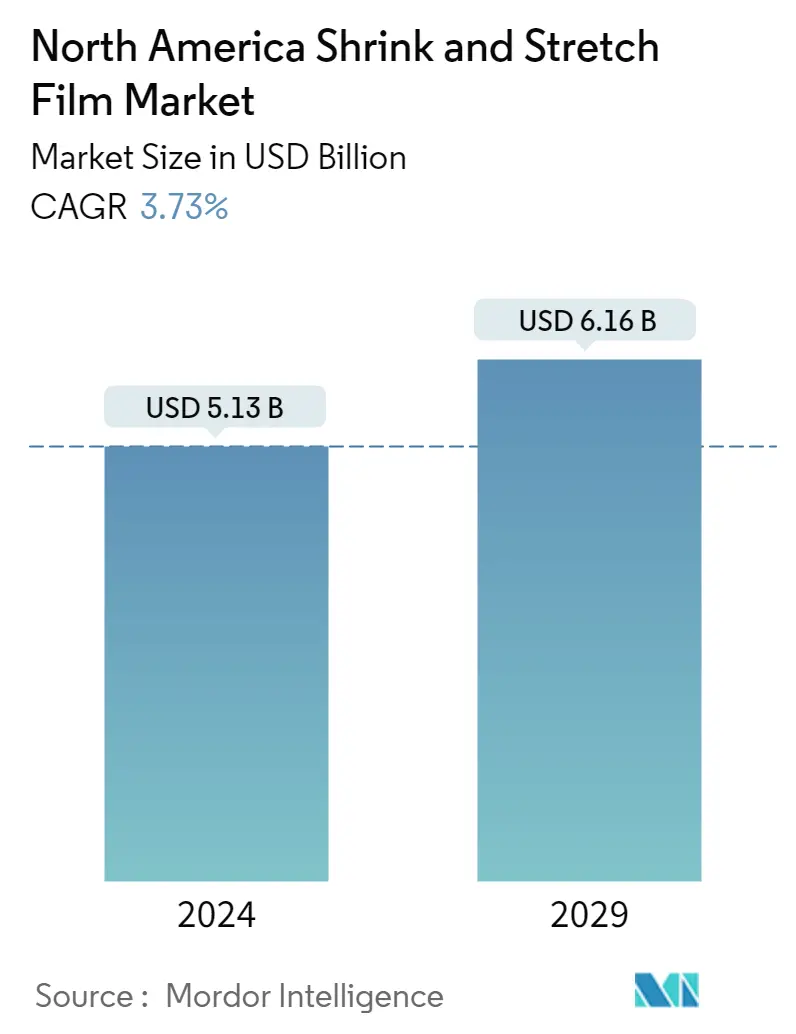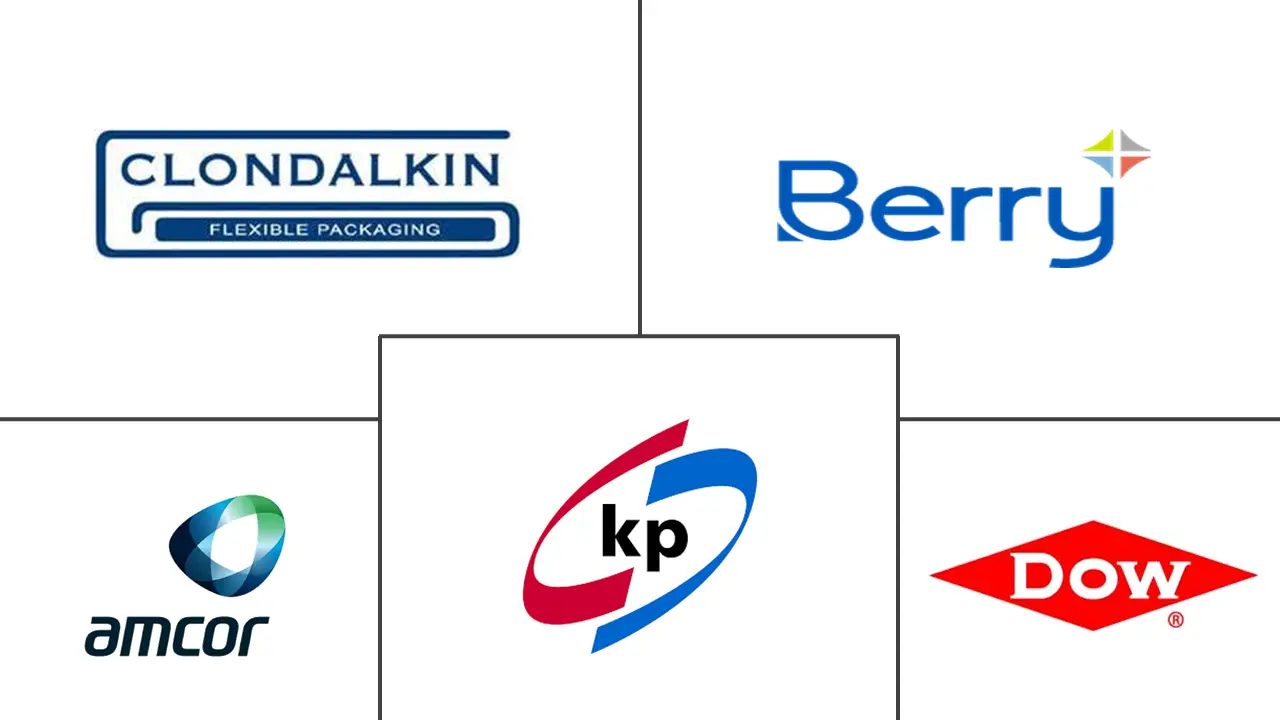Market Size of North America Shrink and Stretch Film Industry

| Study Period | 2019 - 2029 |
| Base Year For Estimation | 2023 |
| Market Size (2024) | USD 5.13 Billion |
| Market Size (2029) | USD 6.16 Billion |
| CAGR (2024 - 2029) | 3.73 % |
| Market Concentration | Medium |
Major Players
*Disclaimer: Major Players sorted in no particular order |
Need a report that reflects how COVID-19 has impacted this market and its growth?
North America Shrink & Stretch Film Market Analysis
The North America Shrink and Stretch Film Market size is estimated at USD 5.13 billion in 2024, and is expected to reach USD 6.16 billion by 2029, growing at a CAGR of 3.73% during the forecast period (2024-2029).
- Stretch and shrink films are polythene films made with advanced engineering used for packaging items. These films have unique chemical properties that differentiate them in terms of flexibility and stretchability. Stretch films are thin polythene films that are flexible and elastic and are used to wrap around pallet loads, whereas shrink films are thin films wrapped around a single product or commodity and require heat to pack. These films help keep items from spoiling due to air and moisture, improving the quality of packed goods.
- Shrink sleeve labels refer to 360-degree printed labels that typically use heat in the application process to conform to the product's shape to which the label is applied. Shrink sleeve labels are printed on either side of plastic or polyester film material. The durability of the shrink sleeves makes them ideal for products that encounter moisture or friction.
- With various brands increasing their focus on 2025 sustainability goals, exploring more sustainability options is becoming increasingly central to meeting their pledges. Many bottled beverage producers choose recycle-ready polyethylene (PE) shrink film over corrugate and paperboard because it uses less energy and lowers greenhouse emissions in the distribution channel without compromising run speeds and machinability.
- Amcor stated that PE shrink is one of the most recycled types of plastic films in the United States, collected through the 18,000 in-store drop-off locations in North America. Expanding efforts to close the loop on a circular economy with post-consumer recycled (PCR) content can achieve additional sustainability benefits while providing the same versatility and performance as standard PE shrink films.
- The impact of the COVID-19 pandemic on the market has been positive in industries, such as food and beverage, pharmaceutical, and cosmetic industries, among others, owing to increased demand. With the factories shutting down during the initial outbreak of the pandemic, beauty brands were forced to find domestic packaging alternatives and temporarily switched to shrink sleeve labels. Overall, the shrink and stretch sleeve is expected to witness growth in the region during the post-pandemic period. Various end-user industries are sticking to shrink and stretch films as they offer shorter lead times, reduced costs, lower minimums, and lesser inventory.
- In September 2021, Clysar introduced Clysar EVO-C confidential shrink film for its family of recyclable shrink films pre-approved for the store drop-off label by the How2Recycle program during PACK EXPO Las Vegas. Clysar EVO-C film is a unique opaque security and shipping material that offers UV-blocking properties and can significantly reduce packaging volume and weight while protecting from light degradation. It is ideal for demanding e-commerce, mailing, distribution, and packaging applications.
